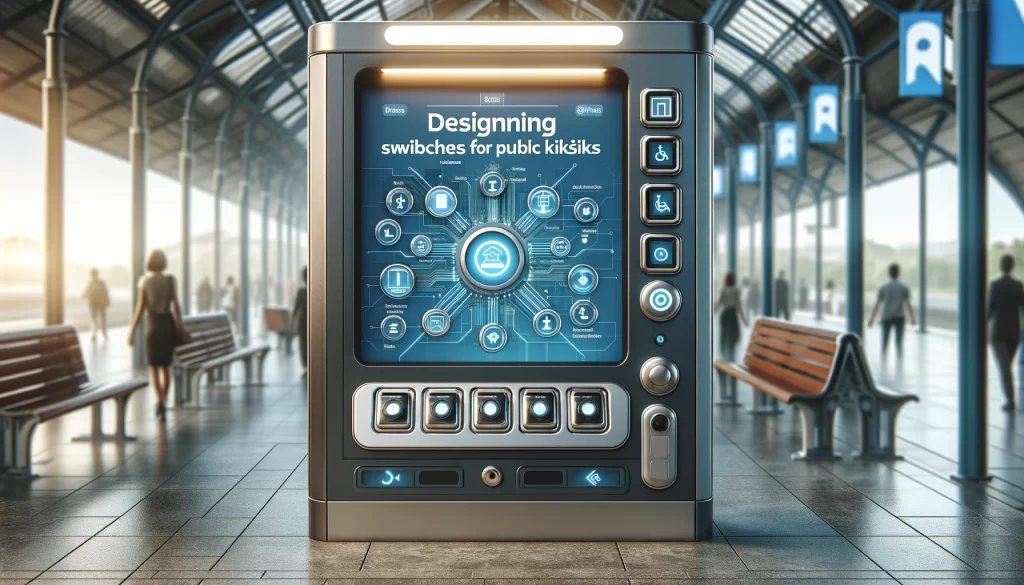Introduction
In today’s fast-paced world, public kiosks have become ubiquitous in providing information and services in a variety of settings. Membrane switches play a pivotal role in these kiosks, balancing the need for durability, user-friendliness, and aesthetic appeal. This comprehensive guide delves into the intricacies of designing membrane switches for public kiosks, encompassing various aspects over 1500-2000 words.
Understanding the Role of Membrane Switches in Public Kiosks
Essence of Membrane Switches: Membrane switches are the interfaces through which users interact with kiosks. They need to be intuitive, responsive, and able to withstand high usage.
Challenges in Public Spaces: Designing for public kiosks involves considerations like varying user profiles, high traffic, exposure to elements, and the need for accessibility.
Design Considerations for Membrane Switches
User Interface Design: The layout should be intuitive, with clear labeling and logical grouping of functions. Considering universal design principles ensures accessibility for all users, including those with disabilities.
Durability and Vandal Resistance: Materials and construction must be chosen for their ability to withstand constant use, vandalism, and environmental factors.
Aesthetic Appeal: The design should not only be functional but also visually appealing to attract and retain user attention.
Material Selection and Construction
High-Durability Materials: Using robust materials like polycarbonate or polyester that can endure frequent use and exposure to elements.
Protective Coatings: Implementing anti-scratch and anti-graffiti coatings to maintain the appearance and functionality of the switches.
Sealing and Weatherproofing: Ensuring the switches are sealed and weatherproof to prevent damage from moisture, dust, and other environmental factors.
Technological Integration
Touchscreen Technology: Incorporating capacitive or resistive touchscreen technology for a modern and seamless user experience.
Interactive Elements: Adding elements like LED indicators or haptic feedback to enhance user interaction.
Smart Connectivity: Integrating IoT capabilities for remote monitoring and management of the kiosks.
Ergonomics and Accessibility
Ergonomic Design: Ensuring the kiosk and its membrane switch are ergonomically designed for comfortable use by a diverse range of users.
Accessibility Features: Incorporating features like Braille, voice commands, and adjustable height settings to cater to users with different needs.
User Experience and Interface
Intuitive User Interface: Designing the interface to be straightforward and easy to navigate for first-time users.
Customization for Different Applications: Tailoring the design to suit the specific application of the kiosk, whether it’s for information, ticketing, or any other service.
Durability Testing and Quality Assurance
Rigorous Testing: Conducting extensive tests to simulate long-term use and exposure to various conditions.
Quality Standards: Adhering to industry standards for durability, safety, and user interface design.
Case Studies and Applications
Transportation Hubs: Designing for high-traffic areas like airports and train stations, focusing on efficiency and speed of use.
Retail Environments: Creating interactive and engaging interfaces for shopping kiosks.
Public Information Points: Ensuring clarity and accessibility in information kiosks located in public spaces like parks and city centers.
Environmental Considerations
Sustainable Materials: Using eco-friendly materials and processes in the manufacturing of membrane switches.
Energy Efficiency: Implementing energy-saving features like LED backlighting and low-power electronic components.
Future Trends and Innovations
Emerging Technologies: Exploring the incorporation of advanced technologies like AI and augmented reality in public kiosk interfaces.
Responsive and Adaptive Designs: Creating membrane switches that adapt to user behavior and environmental changes.
Conclusion
Designing membrane switches for public kiosks is a multifaceted task that requires a deep understanding of user behavior, environmental challenges, and technological advancements. It’s about creating an interface that is not just a touchpoint but a seamless and enjoyable part of the user’s journey. For companies involved in this field, staying ahead of the curve in terms of design, technology, and user experience is crucial to creating successful and widely-accepted public kiosks.




